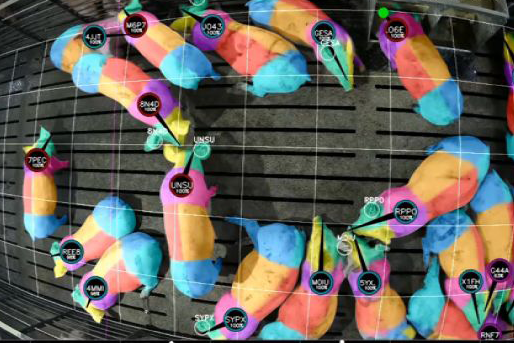In pig breeding, breeding companies are the first and fundamental building block in the production chain. This is where the foundations are laid to produce results later in production. Although the generation interval in pigs is not as long as in cattle, a certain amount of time passes before breeding decisions made at the nuclear stage show their effects at the production stage. This time lag means that not only must current market developments be monitored, but future developments must also be anticipated.
Currently, the focus in pig breeding is on topics such as robustness, longevity, and sustainability. The use of new technologies such as artificial intelligence (AI) and innovative data acquisition systems are making impressive progress in this area.
More complex breeding goals combined with new focus
Despite increasingly complex goals and changing weightings, genetic progress in pig breeding has developed rapidly in recent years. The focus has been on increasing biological performance, whether in terms of piglet numbers, growth, feed conversion or meat quality. At the same time, knowledge on topics of feeding, health, biosecurity, as well as on management and barn design have been continuously developed.
For animal welfare: focus on robustness and durability
The importance of animal welfare has become increasingly important. New legal requirements aim to improve animal welfare and create new husbandry scenarios. Although it would theoretically be possible to achieve 45 or more weaned piglets per sow per year in just ten years, the emphasis on breeding goals has shifted. Robustness and sustainability are moving to the forefront to optimize management.
Data quality is the key
A critical factor in this progress is the quality of the data collected. This is not only about the accuracy of the data, but also about the location of data collection, the selection of animals for data collection, and the precise assignment of data to individual animals.
PIC’s GNXbred program – now also for Damlines
PIC’s GNXbred program (Genetic Nucleus Xbred Programme) plays a crucial role in this. This program focuses on collecting and using data from crossbred animals. This allows for more precise selection based on real production data. The program was originally introduced for sireline boars and provides detailed information on grower/finisher performance, losses, defects and meat quality.
Implementing a similar program for damlines was more challenging because the time span from birth to slaughter of a pig is much longer. The exact parentage of each breeding sow must be documented perfectly to assign phenotypic performance to the appropriate genotype. Identification and documentation play a critical role.
In 2020, PIC’s Maternal GNX program was introduced. Annually, extensive data sets from GNX production farms are now incorporated into the breeding value estimation of the maternal lines. This data offers tremendous potential. Traits that previously could only be recorded on purebred animals are now complemented and enhanced by realistic production data.
New trait in breeding value estimation: Reproductive Success
The integration of new traits into breeding value estimation, such as “sow robustness” and “reproductive success” aim at targeted selection. “Reproductive success” refers to the probability of sows remaining in the herd beyond the second litter, minimizing reproductive disorders.

New trait in breeding value estimation: Digital feet & leg evaluation
The use of artificial intelligence also enables the introduction of “Digital Foundation Assessment”. AI can evaluate images and video sequences and provides precise data on the body structure and gait of the animals.

Innovations for successful pig production
Overall, PIC is bringing a fundamental change to pig production through these innovations. Robustness, longevity, and sustainability are key criteria that are important for both producers and consumers. The investments in technology and data quality enable more precise selection and contribute to the further development of the entire industry.




